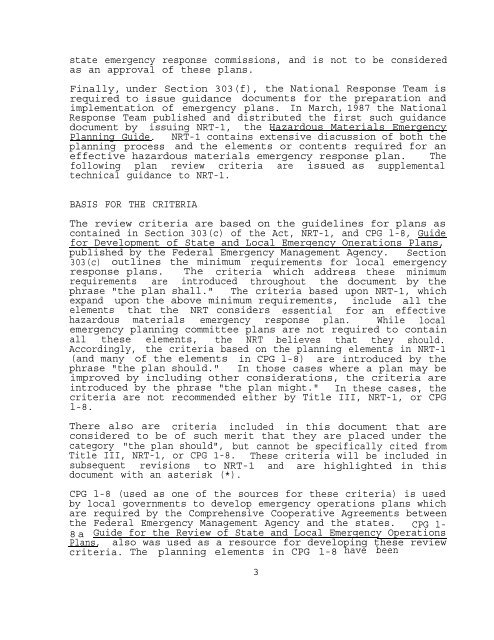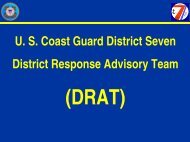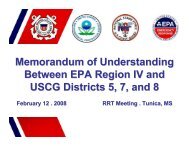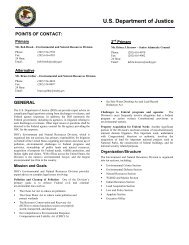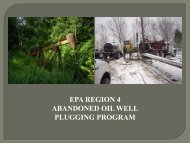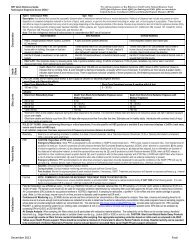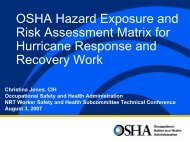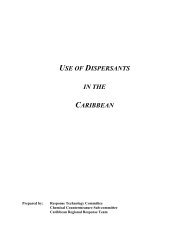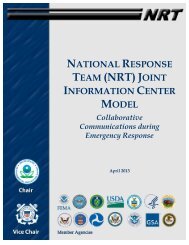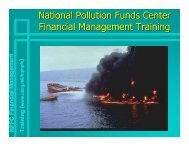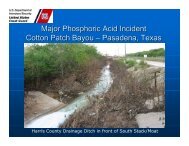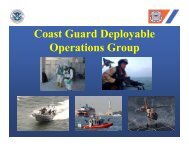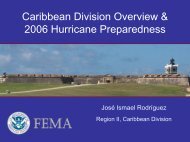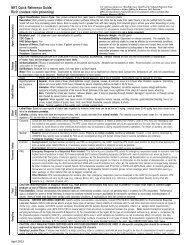Criteria for Review of Hazardous Materials Emergency Plans
Criteria for Review of Hazardous Materials Emergency Plans
Criteria for Review of Hazardous Materials Emergency Plans
You also want an ePaper? Increase the reach of your titles
YUMPU automatically turns print PDFs into web optimized ePapers that Google loves.
state emergency response commissions, and is not to be consideredas an approval <strong>of</strong> these plans.Finally, under Section 303(f), the National Response Team isrequired to issue guidance documents <strong>for</strong> the preparation andimplementation <strong>of</strong> emergency plans. In March, 1987 the NationalResponse Team published and distributed the first such guidancedocument by issuing NRT-1, the <strong>Hazardous</strong> <strong>Materials</strong> <strong>Emergency</strong>Planning Guide. NRT-1 contains extensive discussion <strong>of</strong> both theplanning process and the elements or contents required <strong>for</strong> aneffective hazardous materials emergency response plan. Thefollowing plan review criteria are issued as supplementaltechnical guidance to NRT-1.BASIS FOR THE CRITERIAThe review criteria are based on the guidelines <strong>for</strong> plans ascontained in Section 303(c) <strong>of</strong> the Act, NRT-1, and CPG l-8, Guide<strong>for</strong> Development <strong>of</strong> State and Local <strong>Emergency</strong> Onerations <strong>Plans</strong>,published by the Federal <strong>Emergency</strong> Management Agency. Section303(c) outlines the minimum requirements <strong>for</strong> local emergencyresponse plans. The criteria which address these minimumrequirements are introduced throughout the document by thephrase "the plan shall." The criteria based upon NRT-1, whichexpand upon the above minimum requirements, include all theelements that the NRT considers essential <strong>for</strong> an effectivehazardous materials emergency response plan. While localemergency planning committee plans are not required to containall these elements, the NRT believes that they should.Accordingly, the criteria based on the planning elements in NRT-1(and many <strong>of</strong> the elements in CPG l-8) are introduced by thephrase "the plan should." In those cases where a plan may beimproved by including other considerations, the criteria areintroduced by the phrase "the plan might." In these cases, thecriteria are not recommended either by Title III, NRT-1, or CPGl-8.There also are criteria included in this document that areconsidered to be <strong>of</strong> such merit that they are placed under thecategory "the plan should", but cannot be specifically cited fromTitle III, NRT-1, or CPG 1-8.subsequent revisions to NRT-1 anddocument with an asterisk (*).These criteria will be included inare highlighted in thisCPG l-8 (used as one <strong>of</strong> the sources <strong>for</strong> these criteria) is usedby local governments to develop emergency operations plans whichare required by the Comprehensive Cooperative Agreements betweenthe Federal <strong>Emergency</strong> Management Agency and the states. CPG l-8a Guide <strong>for</strong> the <strong>Review</strong> <strong>of</strong> State and Local <strong>Emergency</strong> Operations<strong>Plans</strong>, also was used as a resource <strong>for</strong> developing these reviewcriteria. The planning elements in CPG l-8 have been3


